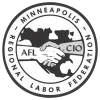Integrating Artificial Intelligence — AI — Into the Labor Movement

The integration of artificial intelligence (AI) into the labor movement marks a significant paradigm shift, transforming traditional working dynamics. As industries evolve and technology becomes more ingrained in our daily lives, the labor movement is not only acknowledging AI but also strategically embracing it to navigate the changing landscape.
One notable aspect of this embrace is the recognition that AI has the potential to enhance efficiency and productivity. Labor unions, once perceived as resistant to technological advancements, are now collaborating with industries to implement AI solutions that streamline processes. From automated data analysis to predictive maintenance in manufacturing, these innovations aim to augment human capabilities rather than replace them, fostering a symbiotic relationship between workers and AI.
Additionally, the labor movement is increasingly focusing on upskilling and reskilling initiatives. Recognizing that AI can create new job categories and alter existing ones, unions are taking proactive measures to ensure their members are equipped with the necessary skills. Training programs tailored to the demands of an AI-driven workforce are becoming commonplace, empowering workers to adapt and thrive in a rapidly evolving job market.
Moreover, AI is becoming a powerful tool for collective bargaining and advocating workers’ rights. Data analytics powered by AI enables unions to negotiate from a position of strength, armed with insights into industry trends, company performance, and market dynamics. This data-driven approach enhances the bargaining power of labor organizations, enabling them to secure better wages, working conditions, and benefits for their members.
On the flip side, concerns about job displacement due to AI have prompted the labor movement to advocate for policies that safeguard workers. This includes pushing for legislation that ensures a just transition for employees affected by automation, such as offering retraining programs, unemployment benefits, and support for displaced workers to find new opportunities in emerging industries.
Collaboration between labor unions and tech companies is a notable development in this evolution. By fostering open dialogue and partnerships, both parties can work towards a future where AI is harnessed responsibly to benefit workers and businesses alike. This collaborative spirit reflects a departure from the adversarial relationship often depicted in the past, signaling a shared commitment to shaping a positive and inclusive future for the workforce.
In conclusion, the labor movement’s embrace of AI signifies a transformative approach to the evolving world of work. From enhancing efficiency and productivity to advocating for workers’ rights, the integration of AI is reshaping the way labor operates. This proactive stance positions the labor movement at the forefront of a future where humans and AI collaborate harmoniously, ensuring a more resilient, adaptable, and empowered workforce.
Full disclosure: The column above was 100 percent written by ChatGPT in response to the following prompt: “Can you write a 400 word column about how the labor movement is embracing AI?” The real Chelsie Glaubitz Gabiou will explore how AI is impacting the labor movement in a future column.
